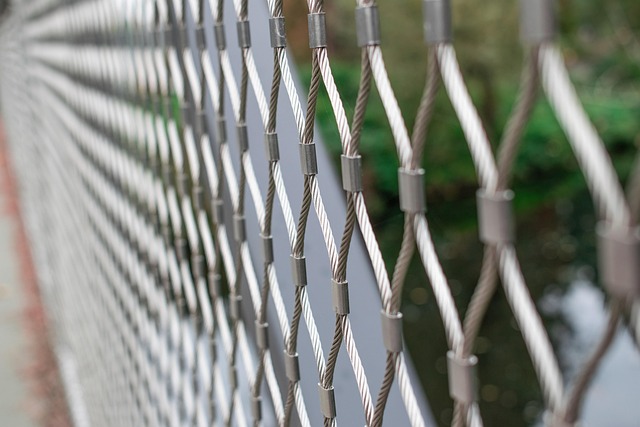Large properties present unique fencing challenges, demanding durable, cost-effective solutions. This article guides homeowners through the process of selecting ideal fencing options tailored to extensive landscapes. We delve into innovative materials, from eco-friendly recycled plastics to robust wooden alternatives, offering both aesthetics and affordability. Additionally, we explore efficient installation techniques aimed at minimizing labor expenses while ensuring structural integrity. Furthermore, long-term maintenance strategies are presented to preserve fences’ longevity and optimal economic performance.
- Understanding Your Fencing Needs for Large Properties
- Exploring Cost-Effective Materials and Designs
- Installation Methods to Save on Labor Costs
- Long-Term Maintenance Tips for Durability and Economy
Understanding Your Fencing Needs for Large Properties
Before exploring cost-effective fencing solutions, it’s crucial to understand your specific needs for a large property. Consider factors like desired privacy levels, security requirements, aesthetic preferences, and functional purposes. For instance, if privacy is a top priority, solid wooden or vinyl fences offer effective seclusion. On the other hand, if security is paramount, a robust chain-link fence with added security features could be more suitable.
Additionally, think about the layout of your property. Fences for sprawling lands might need to span vast distances, requiring durable materials and efficient installation methods to remain sturdy over time. Also, consider any local regulations or restrictions related to fencing height, materials, and placement. Understanding these needs will help guide you towards the most fitting fencing solution that balances affordability with effectiveness.
Exploring Cost-Effective Materials and Designs
When it comes to fencing large properties, cost-effectiveness is a top priority for many homeowners. Exploring creative materials and designs can significantly reduce construction costs without compromising on quality or aesthetics. One popular trend in the industry is utilizing sustainable and locally sourced materials like recycled plastic or wood composite. These materials offer durability and long-lasting performance while being environmentally friendly and often more affordable than traditional options.
Additionally, simple yet elegant design choices play a vital role in keeping costs down. Flat panels, for instance, are less labor-intensive to install compared to intricate designs with numerous curves or details. Horizontal slats or lattice patterns can also provide security and privacy while being relatively economical. By combining these material and design strategies, homeowners can achieve a beautiful and secure fence that aligns with their budget.
Installation Methods to Save on Labor Costs
When it comes to installing fences on large properties, there are several methods that can significantly reduce labor costs. One such method is using pre-assembled fence panels. These panels arrive ready for installation, requiring less skilled labor and time compared to traditional fence building. By choosing panelized fences, property owners can save on the overall cost of hiring specialized installers.
Another effective approach is adopting do-it-yourself (DIY) methods. With the right tools and a bit of patience, homeowners can install fencing themselves, cutting down on labor expenses. There are various DIY fence kits available in the market that include all the necessary components and clear instructions, making the process more accessible and cost-friendly for large properties.
Long-Term Maintenance Tips for Durability and Economy
To ensure your fencing solution remains cost-effective over the long term, regular maintenance is key. Start by inspecting the fence regularly for signs of damage, corrosion, or wear and tear. Promptly repair any issues to prevent small problems from escalating into major repairs later on. Keep the fence clean by removing debris, leaves, and other buildup, which can attract pests and accelerate deterioration.
Additionally, apply a fresh coat of paint or sealant every few years to protect the fence from the elements. Use high-quality products suitable for outdoor use, and follow the manufacturer’s instructions for application. Regular trimming of nearby trees and shrubs will also help maintain the fence’s appearance and structural integrity by preventing overgrowth that could cause damage.
